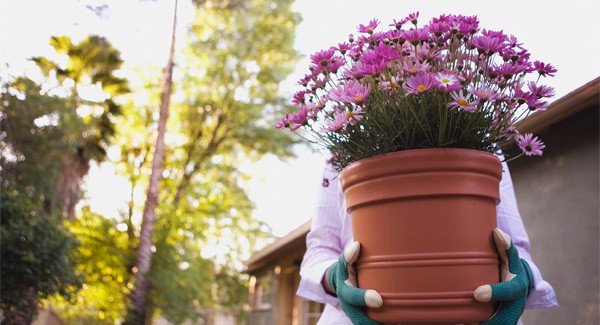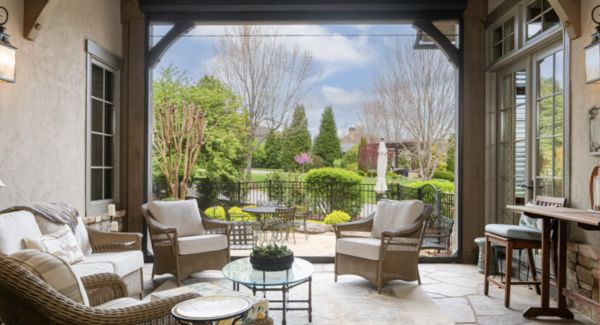
Last Updated on January 3, 2024
Don’t wait until our cool nights turn into full-on cold days. Now is the time to begin thinking about how to winterize your home.
Whether you’ll be in town all season or you plan to be away for an extended period, it’s important to protect your home from the chill of winter. No matter your climate, it’s always smart to prepare for the possibility of electrical outages brought on by heavy snow and ice.
Depending on the size and age of your house, as well as how many winters you’ve prepared it in the past, you may or may not have a lot of home winterizing to do. Don’t panic—the tasks on this list aren’t overwhelming when you prepare your home for winter one step at a time.
Wondering how best to winterize your home? Here’s a comprehensive list of everything you need to do to protect your home for winter:
Seal leaks, especially around doors and windows
- Add or replace worn weather stripping around doors and windows. While you’re at it, replace worn doorstops at the bottom of doors.
- Caulk gaps where necessary.
- If you have them, install storm doors and windows. Don’t forget to winterize basement windows.
- If it’s been a long time since your home was updated, replace old windows with energy efficient windows if you can.
- Use caulking and weather stripping around entry points for all pipes and ducts that travel through an exterior wall.
- Install insulating kits behind electrical plugs that are on a wall with an exterior side.
Is the insulation adequate?
Proper insulation keeps your home warmer in the winter and cooler in the summer. Plus, it can reduce your energy costs in winter and throughout the year. Ask the staff at your local home improvement center how much insulation is recommended at your elevation, then check your attic to make sure you have an adequate amount of quality insulation.
Some homes benefit from additional wall insulation, as well. If you’d like to tackle this project yourself, home improvement center staff will explain types of insulation that can be added to existing walls.
Check your heating system and fireplace
- Have a heating professional do a routine check of your full heating system before cold weather arrives.
- Vacuum vents and other heating components so that they are not clogged with dust and can flow easily.
- If it has one, replace your furnace filter. Make future replacements as needed or directed by your furnace manufacturer.
- Consider installing a setback thermostat. It regulates the temperature automatically, allowing the home to be cooler when you are away or asleep.
- Fill propane or oil tanks, as needed.
- Have the chimney inspected and cleaned. This should be done annually for fire safety, especially if you use your fireplace recreationally throughout the season.
- Close the fireplace damper when not in use.
Check the roof and nearby trees
- Replace any loose shingles on your roof.
- Make sure the flashing around the chimney or vent pipes is watertight.
- Check the bricks and mortar.
- Install a screen at the top of the chimney to keep out leaves and other detritus.
- Clean drain gutters and point downspouts away from the house.
- Trim tree limbs that are hanging over or touching the roof.
Winterize the plumbing
- Take care of known issues with pipes that freeze. Heat tape can be used to keep them warm during extremely cold weather.
- Learn how to turn off water at its source so that you can stop leaks immediately if they start.
- Drain water from outdoor faucets. Use caulking and weather stripping to protect them from freezing.
- If your plumbing is old, consider replacing it. Especially if you’re planning other home improvements, it could be to your benefit to address the plumbing at the same time.
Winterize outdoor items
- Give decks an additional coat of sealer while the weather is still warm.
- Drain the gas from your lawnmower into an approved gas can. Store in a safe location.
- Check your home’s foundation and siding for cracks or gaps. Repair as necessary.
- Drain garden hoses, roll them up, and store them inside.
- Close and cover the swimming pool, if you have one.
- Prune shrubbery and add mulch to perennial flower beds.
- Cover outdoor furniture or store it inside.
Collect emergency supplies
In case of emergencies, collect the following items and keep them accessible:
- Candles and matches or a small butane lighter.
- Flashlight and batteries.
- Propane tank or charcoal for outdoor grills.
- Battery-operated radio or weather radio. (Buy extra batteries.)
- Snow blowers, shovels, and/or salt or chemicals to melt snow.
- Containers of bottled water. Non-perishable food to last a few days. Be sure you have a hand-operated can opener.
- Paper plates and plastic eating utensils. Paper towels.
- Extra firewood. Fuel for your generator. Kerosene and a kerosene heater (use with carbon monoxide monitoring strips).
In case of potential bad weather, make sure your devices are all charged, as well, or that you have a portable charger. There’s nothing more terrifying than an afternoon with a dead iPad and no access to Netflix!
Stay safe this winter
We joke, but cold weather can be dangerous if you are not prepared. Completing the above checklist can help keep you safe and warm this season.
There may be additional things you need to do to winterize your home that are important for your area or neighborhood. If you’re new to town, ask your neighbors how they prepare for cold weather. And if you have additional questions, your Allen Tate/Beverly-Hanks RealtorⓇ is always available to help!
Contact us today to speak with an Allen Tate/Beverly-Hanks real estate agent about how best to winterize your home.



